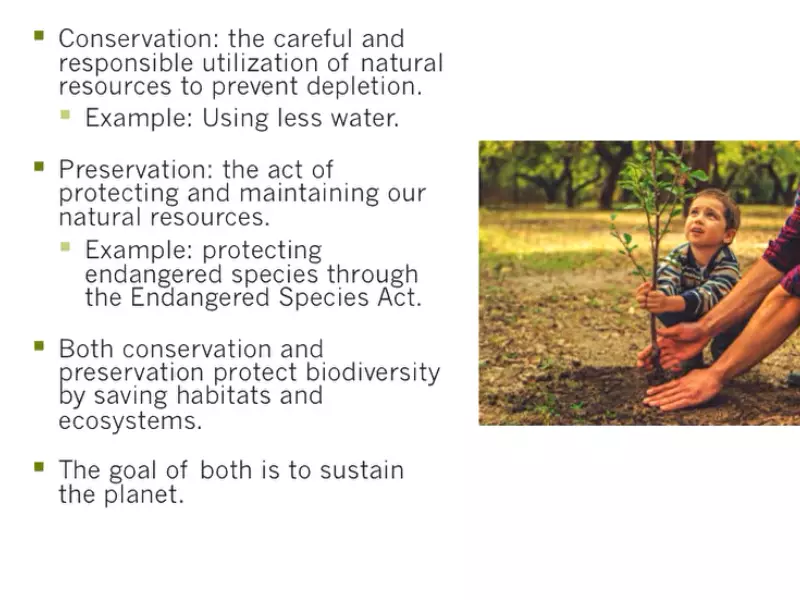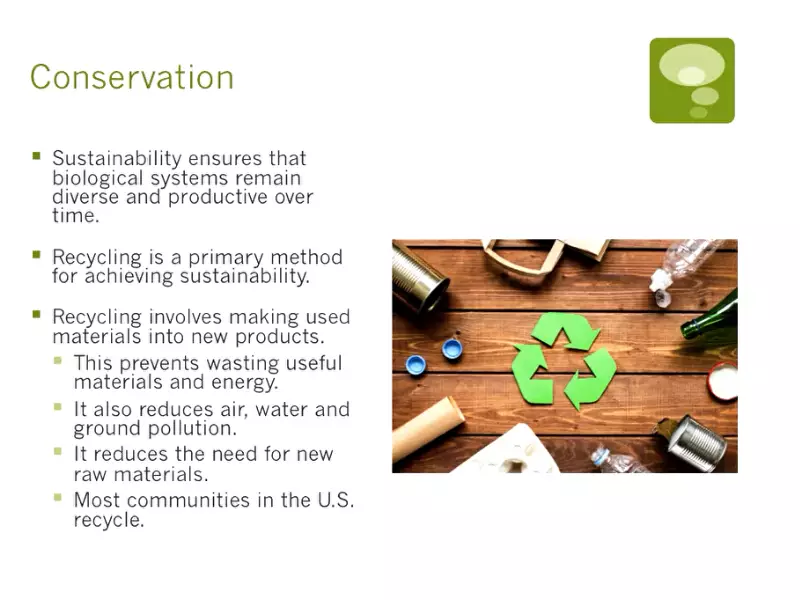Environmental protection encompasses a wide range of activities and strategies aimed at preserving the planet’s natural resources and biodiversity. Among these, conservation and preservation stand out as two fundamental approaches. Though they share a common goal of protecting the environment, their methods, and philosophies differ significantly, making each unique in its way of contributing to the well-being of our planet.
Conservation focuses on the sustainable use and management of natural resources to meet current human needs while ensuring their availability for future generations. Preservation, on the other hand, emphasizes the protection of nature from human interference, advocating for the maintenance of habitats in their pristine state. Both play critical roles in environmental protection, yet they approach it from different angles.
The distinction between conservation and preservation is pivotal in the field of environmental protection. Conservation seeks a balance between human use and the sustainability of natural resources, whereas preservation aims to keep natural areas untouched by humans. This fundamental difference shapes the strategies, policies, and outcomes associated with each approach, influencing how we interact with and protect our natural environment.

Core Concepts
Conservation Explained
Definition and Objectives
Conservation refers to the sustainable use and management of natural resources including wildlife, water, air, and earth deposits. The primary objective is to ensure that these resources are available for future generations while meeting the needs of the present. Conservation efforts aim to maintain the natural world in order to prevent depletion or degradation of resources, ensuring ecological balance and biodiversity.
Historical Context
The concept of conservation has evolved over centuries, beginning with early practices by indigenous peoples who managed natural resources through seasonal hunting, fishing, and farming practices. In the late 19th and early 20th centuries, conservation efforts became more formalized with the establishment of the first national parks and protected areas, a movement largely credited to pioneers such as John Muir and President Theodore Roosevelt in the United States. This era marked the beginning of conservation as a global initiative, emphasizing the importance of natural resources and the need for their careful management.
Preservation Explained
Definition and Goals
Preservation is the act of maintaining, protecting, and keeping natural resources in their pristine state by avoiding human interference. The goal of preservation is to ensure that ecosystems, biodiversity, and natural landscapes are kept as untouched and intact as possible. This approach advocates for the protection of nature for its own intrinsic value and for the benefit of future generations.
Key Pioneers and Movements
Prominent figures like John Muir have been instrumental in the preservation movement, leading to the establishment of the Sierra Club and the creation of the Yosemite National Park. These efforts were foundational in promoting the idea that some areas should be preserved from human development entirely, a concept that has since been embraced worldwide in the form of protected areas, national parks, and nature reserves.
Conservation vs. Preservation
Policy and Practice
Legal Frameworks
Both conservation and preservation are supported by legal frameworks that include laws, regulations, and treaties at both national and international levels. For instance, the Endangered Species Act in the United States focuses on conserving threatened and endangered species and their habitats, while the World Heritage Convention aims to preserve cultural and natural heritage around the globe.
Global Initiatives
Global initiatives such as the Convention on Biological Diversity (CBD) and the United Nations Framework Convention on Climate Change (UNFCCC) play crucial roles in conservation and preservation efforts. These initiatives provide platforms for countries to collaborate on environmental protection, promoting sustainable development and the conservation of biological diversity.
Focus Areas
Ecosystems and Biodiversity
Conservation efforts are often focused on protecting ecosystems and biodiversity, ensuring the survival of species and the health of natural habitats. Preservation efforts, meanwhile, aim to keep certain areas completely free from human influence, maintaining their natural state for ecological research, education, and the enjoyment of future generations.
Cultural Heritage
Cultural heritage, including historical sites, landscapes, and practices, is another important focus. Conservation in this context involves the maintenance and management of these sites to prevent deterioration, while preservation seeks to protect and maintain them in their original state.
Techniques and Strategies
Conservation Methods
- Sustainable resource management: Ensuring that the use of natural resources does not exceed their capacity to regenerate.
- Habitat restoration: Restoring ecosystems to their natural state to support wildlife.
- Wildlife corridors: Creating passages for wildlife to move between habitats safely.
Preservation Approaches
- Establishing protected areas: Designating national parks, nature reserves, and wilderness areas where human activity is limited.
- Legal protection: Enacting laws to safeguard protected areas and species.
- Public education: Raising awareness about the importance of preserving natural and cultural heritage.
Case Studies
Successful Conservation Efforts
- Wildlife Protection: The protection of the American bison from near extinction in the late 19th century through conservation efforts.
- Habitat Restoration: The restoration of the Florida Everglades, a project aimed at replenishing the area’s natural water flow and ecosystem.
Iconic Preservation Examples
- National Parks: Yellowstone National Park, the first national park in the U.S., established in 1872 as a public park or pleasuring-ground for the benefit and enjoyment of the people.
- World Heritage Sites: The Galápagos Islands, recognized for their unique and diverse ecosystems, are protected as a natural heritage site of global importance.

Impact and Importance
Ecological Benefits
Biodiversity Maintenance
Biodiversity is the backbone of healthy ecosystems. Conservation and preservation efforts ensure the survival of diverse species by maintaining natural habitats and genetic variation. This diversity helps ecosystems recover from disasters, resist diseases, and adapt to climate change, proving crucial for ecological resilience.
Ecosystem Services
Ecosystems provide essential services that life depends on. Clean water, pollination of plants, carbon storage, and oxygen production are just a few examples. Through conservation and preservation, we support these natural processes, ensuring they continue to benefit humanity and the planet.
Social and Economic Benefits
Community Involvement
Local communities play a vital role in conservation and preservation. By involving them, projects gain valuable traditional knowledge, enhance local livelihoods, and foster a sense of ownership and responsibility towards natural resources. This community-based approach leads to more sustainable and successful outcomes.
Sustainable Development
Balancing environmental protection with economic growth leads to sustainable development. Conservation and preservation strategies contribute by ensuring resources are used responsibly, supporting eco-tourism, and promoting green technologies, which in turn generates jobs and economic benefits without harming the environment.
Challenges and Controversies
Balancing Development
Urban Expansion
The expansion of cities poses a significant threat to natural habitats. Finding a balance between necessary development and the need to protect natural areas is a constant challenge. Strategies such as green infrastructure and urban planning that incorporates natural spaces are crucial in addressing this issue.
Resource Extraction
Mining, logging, and other forms of resource extraction can lead to significant environmental degradation. Striking a balance between economic benefits and the preservation of ecosystems is complex, requiring stringent regulations and sustainable practices.
Climate Change Effects
Vulnerable Ecosystems
Climate change has profound impacts on ecosystems, making them more vulnerable to extreme weather events, shifting climate zones, and rising sea levels. Conservation and preservation efforts must adapt to protect these ecosystems, focusing on resilience and mitigation strategies.
Adaptive Strategies
Developing adaptive strategies for conservation and preservation in the face of climate change is essential. This includes creating climate-smart conservation plans, enhancing protected area networks, and restoring degraded ecosystems to increase their resilience.
Future Directions
Innovations in Conservation
Technology and Research
Advancements in technology and research are transforming conservation efforts. Drones, satellite imagery, and genetic analysis offer new ways to monitor wildlife, track habitat changes, and manage natural resources more effectively. Investing in these technologies can enhance our ability to protect the environment.
Community-based Conservation
Strengthening community-based conservation initiatives is key to future success. Local communities are the stewards of their environments, and empowering them through education, resources, and legal support ensures the sustainable management of natural resources.
Advocacy and Legislation
Policy Developments
New policies and legislation play a critical role in advancing conservation and preservation. Laws that enforce stricter environmental standards, protect endangered species, and promote renewable energy contribute to a more sustainable future. Advocacy efforts are vital in pushing for these legal changes.
Global Cooperation
Addressing environmental challenges requires global cooperation. International agreements and collaborative projects can tackle issues like climate change, wildlife trafficking, and habitat destruction on a scale that individual countries cannot achieve alone. Strengthening these global partnerships is essential for effective conservation and preservation.
Frequently Asked Questions
What is Environmental Conservation?
Environmental conservation is the practice of protecting the earth’s natural resources, ensuring they remain sustainable and available for future generations. It involves careful management of the environment and its resources through practices like recycling, reforestation, and sustainable agriculture, aiming to maintain ecological balance and reduce human impact.
Why is Preservation Important?
Preservation is crucial for maintaining biodiversity, protecting ecosystems, and ensuring natural processes continue unhindered. By keeping areas untouched by human development, we safeguard habitats for countless species, maintain natural landscapes, and allow ecosystems to function naturally, which is vital for the planet’s health.
How Do Conservation and Preservation Differ?
While both conservation and preservation aim to protect the environment, they differ in their core philosophy and approach. Conservation advocates for the sustainable use of natural resources, whereas preservation focuses on protecting nature from human use entirely. Conservation is about utilization with care; preservation is about protection from use.
Can Conservation and Preservation Work Together?
Yes, conservation and preservation can work together harmoniously. By integrating the sustainable use of some natural areas with the complete protection of others, we can ensure a balanced approach to environmental protection. This synergy allows for the sustainable management of resources while also setting aside sanctuaries that remain untouched by human activities.
Conclusion
The concepts of conservation and preservation are fundamental to the ongoing efforts to protect our natural world. Through understanding and applying these principles, we can ensure a healthier planet for future generations. Conservation, with its focus on sustainable use, and preservation, advocating for untouched natural areas, both contribute significantly to our environmental protection strategies.
As individuals and communities, recognizing the importance of both approaches and how they complement each other is crucial. By supporting policies and initiatives that promote both conservation and preservation, we can achieve a balanced and effective strategy for environmental protection, ensuring the beauty and diversity of our planet are maintained for years to come.
